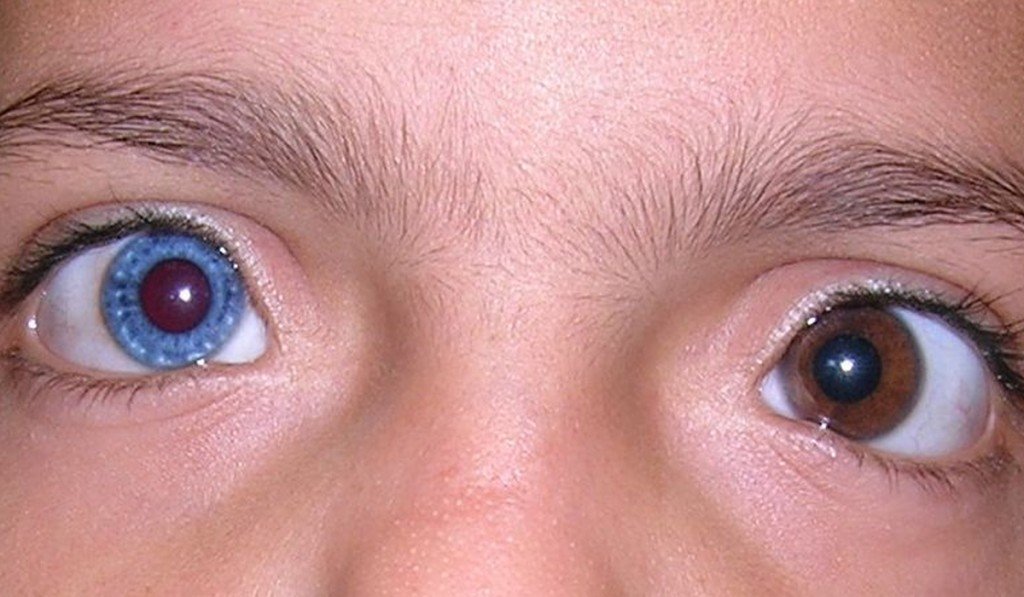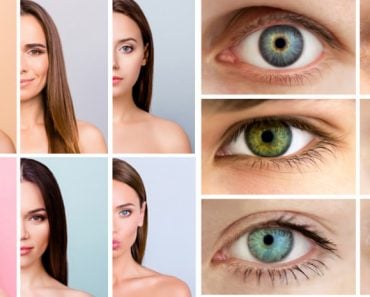Table of Contents (click to expand)
The cause of Heterochromia is an uneven distribution of melanin in the eye. This may be a congenital feature, or it could be acquired. Heterochromia may be acquired due to certain diseases, eye injuries, infections, etc. While congenital heterochromia is usually not indicative of anything, it sometimes may occur due to a congenital disorder like Waardenburg Syndrome, Horner’s Syndrome, Parry–Romberg Syndrome, etc.
The entry of James McAvoy in X-Men: First Class was quite an interesting scene. He was shown in a bar, talking to a pretty, blonde lady. The most striking part about her appearance was her eyes – one was green and the other was blue. In fact, Charles Xavier commented upon her eyes as a conversation starter!
As Professor Charles Xavier said (don’t worry, actual scientists have said it too!), the condition is called Heterochromia. It comes from 2 words; hetero – which means different, and chromia – which refers to color. It is the condition where a person’s eyes are of 2 different colors.
Recommended Video for you:
Cause Of Heterochromia
Heterochromia is the condition where a person has 2 different eye colors. These can either be 2 different colors in the same eye, or both eyes may be differently colored.
The color of our iris – the colored portion of the eye – is determined by the pigment melanin. This is the same pigment responsible for the color of our skin and hair. More melanin results in darker eyes, while less melanin leads to lighter eyes. However, the occurrence of green eyes or hazel eyes is not fully understood yet. It was previously believed that eye color followed the standard pattern of dominant-recessive inheritance. However, it has now been proven that eye color is a polygenic trait, i.e., it is affected by multiple genes. If that were not the case, then blue-eyed parents could never give birth to a brown-eyed baby (as blue eye color is a recessive trait).

2 genes however, are supposed to play a major role in eye color. These are the OCA2 and HERC2. The former is involved in the maturation of melanosomes. Melanosomes are the structures that produce melanin (bet you didn’t see that coming!) The latter supposedly controls the expression of OCA2.
Heterochromia occurs due to an uneven distribution of melanin in the eye. This may be a congenital feature, or it could be acquired. Heterochromia may be acquired due to certain diseases, eye injuries, infections, etc. While congenital heterochromia is usually not indicative of anything, it sometimes may occur due to a congenital disorder like Waardenburg Syndrome, Horner’s Syndrome, Parry–Romberg Syndrome, etc.
Classification Of Heterochromia
The pattern of heterochromia, or the uneven distribution of melanin, can occur in 3 different ways. Thankfully, no matter how uncommon heterochromia is, there are people that save us the burden of having to imagine such a beautiful occurrence!
Complete Heterochromia
In this type, both eyes are differently colored. Complete heterochromia is not very common in humans, although it still does occur.

Sectoral Heterochromia
In sectoral heterochromia or partial heterochromia, there is partial mixing of colors. This means that while both eyes are largely of the same color, there may be a tiny patch in one or both eyes of a different color.

Central Heterochromia
A form of partial heterochromia, in this form, the iris has 2 different colors that surround the pupil like a ring. The outer ring is usually the individual’s actual eye color, while the inner ring radiates out from the pupil.

Occurrence Of Heterochromia
Complete heterochromia is very rare in humans. The other 2 forms, however, have a higher frequency than the first one. Furthermore, humans are not the only ones to have this variation. Certain animal species like Siberian huskies, certain cats like Turkish Vans, etc. exhibit a higher likelihood of heterochromia. Huskies are very susceptible to differently colored eyes, one of which one is mostly blue! Apart from cats and dogs, it is also seen in horses, cattle, water buffaloes, etc.
Heterochromia is certainly fascinating, and it definitely adds to the charm of a person. I have to agree with Professor Charles Xavier here – heterochromia is indeed a very groovy mutation!












